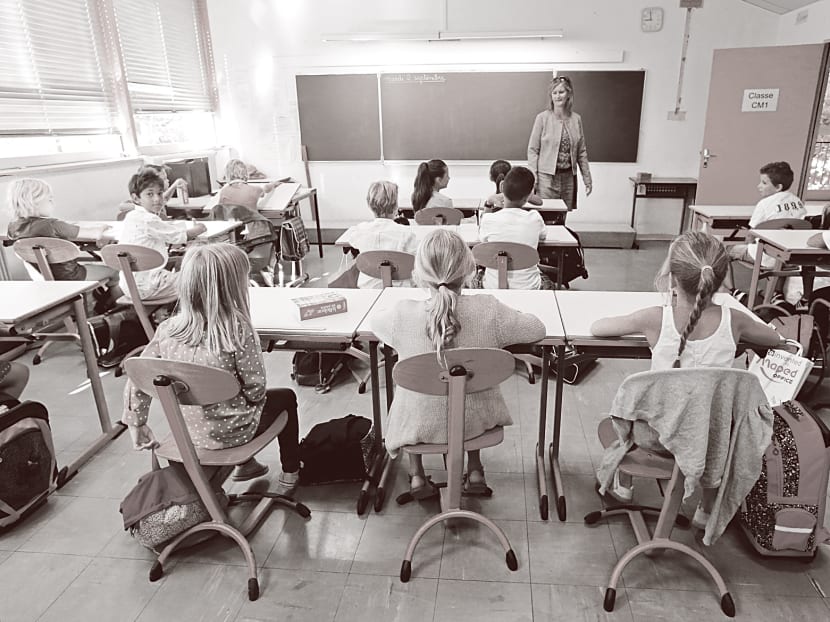Learn what you desire, not what is required
Learning can be of three kinds: Learning that we desire, learning that we need and learning that is required (compulsory learning). The third kind is often what children feel they learn at school and the first is what they want to learn (such as getting better at the World of Warcraft game).
Learning can be of three kinds: Learning that we desire, learning that we need and learning that is required (compulsory learning). The third kind is often what children feel they learn at school and the first is what they want to learn (such as getting better at the World of Warcraft game).
Plato and sometimes Socrates are quoted as saying “compulsory intellectual work never remains in the soul”. There is truth in this saying — if we do not desire what we learn, we may not remember it long enough. Therefore, maybe we need to work on making learning desirable and interesting. In this regard, a set of simple experiments illustrate desirable self-learning.
A dozen years ago, computer scientist Sugata Mitra in New Delhi carried out a fascinating study. He took a personal computer and placed it in a room full of children who had never seen or used a computer.
He then watched them from the outside — hence the name for his experiment, the hole in the wall. What he observed was children playing and figuring out how to use the computer even though they were not provided with any instructions.
The children were learning by doing, helping each other and experimenting, a desirable form of self-learning. In a subsequent study, a computer was placed in a kiosk and loaded with learning games in a village. The games were free downloads from the Internet. Mathematics games covered numbers, shapes, sizes, quantities, addition, subtraction, division, multiplication and algebra.
The children did better in tests and their performance was related to the time spent in the kiosk. Obviously this did not work for everyone, but it shows that a learning environment can be productive for children.
SELF-DIRECTED LEARNING
But how much can children learn without the help of teachers who are experts in their key subject areas? Another experiment, which involved Tamil-speaking children aged between 10 and 14, showed they could learn a limited amount of basic molecular biology by themselves using a public computer facility, but demonstrated improvement when a helper was present, although he or she was not knowledgeable in the subject matter. In fact, the learning outcome of the children without a helper was similar to children at a nearby state government school taught molecular biology by a teacher.
The children who had a helper performed just as well as their peers in a privileged private urban school.
Could this learning be used as a tool in regular schools? I had the privilege of watching a class that promotes self-directed collaborative learning at MacPherson Secondary School with Dr Chew Lee Teo, who is a lead specialist (Learning Partnership in Educational Technology) from the Education Ministry. They used a knowledge-building approach, where students and teachers collaborate, brainstorm and learn together. They also conducted a simple experiment to enhance learning and serve as a focal point.
The learning was interactive, with questions and answers building a knowledge base for the entire class. The teacher served as a mediator and facilitator, and not the one with all the answers. The learning environment kept the children engaged and more importantly, they were able to relate to their own real world experience.
In other words, the learning was less based on a compulsion to learn and more on a desire to learn. They worked on laptops with access to the Internet and software that promoted learning. The software and the teacher became the tools to excite, adapt and improvise the learning process and build context to the learning exercise. The entire class became a self-learning environment.
We have evolved as human organisations by organising ourselves into structures that adapt, learn and evolve. We have evolved through self-organising. Each time we meet new people, we learn about them or the world around us. This environment for organising ourselves to learn has been called the self-organising learning environment (SOLE). While we as humans are always self-organising to learn or accomplish things, one place that SOLEs do not always exist are in learning institutions.
Building an environment and structure to develop self-learning is what schools and colleges should strive for. The MacPherson school experiment demonstrates the development of a self-organising teacher-facilitated learning environment.
The learning environment and the class was a study in excitement and energy. Its collaborative approach is much closer to what students will encounter in the real world, where they will not have to regurgitate answers, but work on projects that function in the real world.
The sooner schools and universities move from a compulsory learning approach to a desirable learning one, the closer we will get to learning for the soul.
ABOUT THE AUTHOR:
Professor K Ranga Krishnan is dean of the Duke-NUS Graduate Medical School Singapore. A clinician scientist and psychiatrist, he chaired the Department of Psychiatry and Behavioural Sciences at Duke University Medical Centre from 1998 to 2009.







